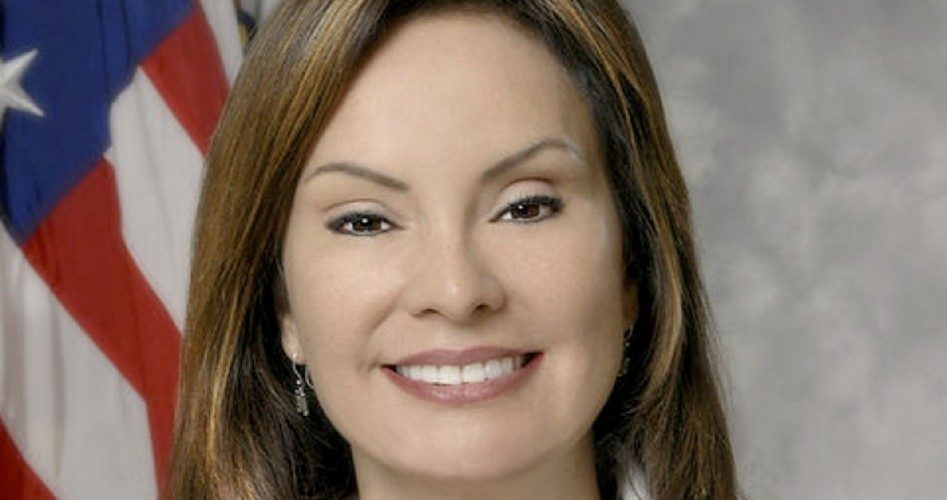
By a vote of 261-116, the House of Representatives passed a bill rewriting Article II of the Constitution and divesting the Senate of the power to accept or reject the appointment of many presidential nominees.
Last year, the Senate passed the measure by a vote of 79-20, so it now goes to the desk of President Obama for his signature.
“Important positions will be filled faster, government agencies will be more capable of offering valuable services to their constituents, and the overall confirmation process will be more efficient,” said Senator Joseph Lieberman (I-Conn.), chairman of the Senate Homeland Security and Governmental Affairs Committee.
Dozens of key management positions in the Departments of Agriculture, Defense, Commerce, and Homeland Security (including the treasurer of the United States, the deputy administrator of the Federal Aviation Administration, the director of the Office for Domestic Preparedness, and the assistant administrator of FEMA) will now be filled by presidential edict, without the need of the “advice and consent” of the Senate, a phrase specifically removed from the process in the text of the bill.
Although the House vote occurred on Tuesday, the Senate voted to surrender its constitutional check on the executive over a year ago on June 29, 2011.
Despite a last-minute attempt by some House leaders to put the measure to a voice vote, thus allowing members to vote in favor of the legislation without being listed on the record, a roll call vote was taken, and the name of every congressman who voted to unconstitutionally neuter the legislative branch is listed.
The process began last March when Senator Chuck Schumer (D-N.Y.) and 15 cosponsors, including Republicans Lamar Alexander (Tenn.); Scott Brown (Mass.); and Mitch McConnell (Ky.), introduced S. 679, the “Presidential Appointment Efficiency and Streamlining Act.” The measure struck from many current laws the “advice and consent” requirement for many executive branch appointments, giving the president unchecked power to fill key administration positions.
In a memo sent to Capitol Hill in advance of Tuesday’s vote in the House, Thomas McClusky of the Family Research Council reminded lawmakers, “The United States Constitution does not bestow kingly powers on the President to appoint the senior officers of the government with no process.”
Although McClusky’s reading of the Constitution is accurate, as of Tuesday it is no longer the law of the land. According to proponents of the measure, the bill benefitted from such strong bipartisan support (95 Republicans joined 166 Democrats voting in favor of passage) because its sole purpose is to relieve the backlog of unconfirmed appointees by eliminating the confirmation requirement for about 200 offices.
The process by which heads of executive branch departments are appointed and confirmed is set forth by Article II, Section 2 of the U.S. Constitution. The “Appointments Clause” provides that the president:
shall nominate, and by and with the Advice and Consent of the Senate, shall appoint Ambassadors, other public Ministers and Consuls, Judges of the supreme Court, and all other Officers of the United States, whose Appointments are not herein otherwise provided for, and which shall be established by Law: but the Congress may by Law vest the Appointment of such inferior Officers, as they think proper, in the President alone, in the Courts of Law, or in the Heads of Departments.
Now, as soon as President Obama adds his signature to the bill, the checks and balances established by our Founding Fathers as a protection against tyranny will be eliminated, as well as the concept of enumerated powers.
This history of the delicate system created by our Founders was synopsized in an article published by the Heritage Foundation:
When the delegates of the states gathered in Philadelphia in the summer of 1787 and wrote the Constitution, they distributed the powers of the federal government among two Houses of Congress, a President, and a judiciary, and required in many cases that two of them work together to exercise a particular constitutional power. That separation of powers protects the liberties of the American people by preventing any one officer of the government from aggregating too much power.
The Framers of the Constitution did not give the President the kingly power to appoint the senior officers of the government by himself. Instead, they allowed the President to name an individual for a senior office, but then required the President to obtain the Senate’s consent before appointing the individual to office. Thus, they required the cooperation of the President and the Senate to put someone in high office.
Many of the Framers had practical experience with government and recognized that not every office would be of sufficient authority and consequence as to merit the attention of both the President and the Senate to an appointment to the office. Therefore, they provided a means by which the Congress by law could decide which of the lesser offices of government could be filled by the President alone, a court, or a department head.
The Presidential Appointment Efficiency and Streamlining Act removes these barriers between the branches and shifts the powers of appointment in such a way that the very foundation of our Republic is weakened under the crushing weight of a powerful executive branch.
In light of this impending imbalance, it must be inquired as to what could compel Congress to legislate away its own power? Why would so many representatives in the Senate and the House willingly abolish their role as bulwark against executive despotism?
Arguably, the answer is a desire to reduce its workload and improve the efficiency of government.
To the minds of many, however, the trade of rightful power for a more streamlined appointment process is a ripoff. As the Heritage Foundation says:
The Congress should not reduce the number of Senate-confirmed appointments as a means of dealing with its cumbersome and inefficient internal process for considering nominations. Doing so gives away Senate influence over a number of significant appointments, does nothing to improve the Senate process, and still leaves nominees whose offices require nominations mired in the Senate process. The proper solution to the problem of a slow Senate is to speed up the Senate rather than to diminish the role of the Senate. The Senate should look inward and streamline its internal procedures for considering all nominations. The proper solution also is the faster one, as the Senate can accomplish the solution by acting on its own in the exercise of its power to make Senate rules, while S. 679 requires approval by both Houses of Congress.
Assuming for the sake of argument that there is a bottleneck in the nomination and confirmation pipeline, one solution is for the executive and legislative branches to work within the framework of the Constitution’s separation of powers to remove the blockage.
Alternatively, however, the Congress could eliminate the problem altogether by reducing the size of the bureaucracy by absolutely refusing to sign off on the creation or continuation of any department, program, or agency that isn’t specifically authorized by the powers granted by the states to the federal government in the Constitution. Such a commitment to be bound by the Constitution would significantly reduce the number of executive branch offices for which appointments would be necessary, thereby dissolving the confirmation clog.
Photo of Treasurer of the United States Rosa Gumataotao Rios: Official Photo


